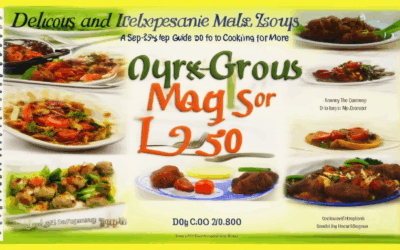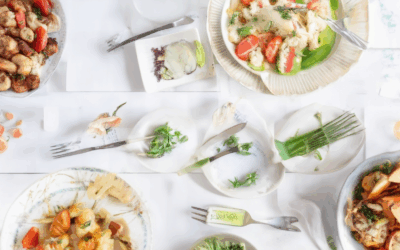Choosing the right wine to complement your meal can elevate any dining experience, turning an ordinary evening into a memorable one. Whether you’re hosting a casual gathering or enjoying a romantic dinner, understanding how to select wines that harmonize with your dishes is key to impressing your guests and enhancing your culinary enjoyment. This guide will walk you through the ins and outs of wine selection, helping you navigate the world of flavors, pairings, and preferences to find the perfect match for every meal.
Key Takeaways
- Light Dishes & Salads: Opt for crisp whites like Sauvignon Blanc, Riesling, and Semillon.
- Seafood & Fish: Choose bright acidity whites such as Sauvignon Blanc and Chardonnay.
- Vegetable Dishes: Lighten up with Sauvignon Blanc and Pinot Gris to enhance vegetable flavors.
- Tomato-Based Dishes: Pair bold reds like Cabernet Sauvignon and Shiraz with rich tomato sauces.
- Red Meats: Go for robust reds like Cabernet Sauvignon and Merlot for grilled meats.
- Casseroles & Stews: Full-bodied reds such as Cabernet Sauvignon and Shiraz stand up well.
- Desserts: Add sweetness with dessert wines like Sauternes and Port.
- Factors Influencing Choice: Tailor your pick to meal type, occasion, and personal preference.
- Wine Recommendations: Try versatile options like Chardonnay, Pinot Noir, and Merlot.
- Serving Suggestions: Serve whites chilled and reds at room temperature; decant reds for enhanced flavor.

How Do I Choose Wine for Dinner?
Choosing the perfect wine to complement your dinner can elevate your meal to new heights. Here’s a step-by-step guide to making the best selection:
Understanding Wine Types
Wine varieties can seem overwhelming, but knowing a few key differences can simplify your decision:
- White Wines: Light, crisp, and refreshing. Ideal for dishes like salads, seafood, and chicken.
- Red Wines: Full-bodied with rich flavors. Pair best with meats like beef, lamb, and pork.
- Sparkling Wines: Perfect for celebratory moments or pairing with appetizers and light courses.
- Dessert Wines: Sweet and fortified, ideal for finishing a meal or pairing with desserts like chocolate or fruit dishes.
Matching Wine to Dish
The general rule of thumb is to pair lighter wines with lighter dishes and full-bodied wines with hearty meals. However, there are exceptions and nuances to explore:
- Vegetable Dishes: Look for medium-bodied whites like Chardonnay or Sauvignon Blanc, or a light red like Pinot Noir.
- Pasta Dishes: Opt for medium-weight wines such as Barbera or Beaujolais for reds, or dry Riesling for whites.
- Grilled Meats: Red wines with bold tannins work well, like Cabernet Sauvignon or Syrah.
- Fish and Seafood: White wines with citrus notes, like Grüner Veltliner or Viognier, are excellent choices.
Considering Personal Preference
Your own taste is the most important factor. If you prefer a specific grape variety or style, seek out wines that align with your preferences:
- Cheaper Options: Look for value-driven wines that offer great quality for the price, such as Cava or Moscato.
- Special Occasions: For events like birthdays or anniversaries, consider premium or rare wines to make the occasion memorable.
- Food Compatibility: Some wines may have unique flavor profiles that pair exceptionally well with certain ingredients, so don’t hesitate to experiment.
Using Resources Wisely
To make informed decisions, utilize tools and resources available online:
- Wine Apps: Try apps like Wine.com or Cellar Scout for personalized recommendations.
- Wine Guides: Consult trusted guides like The Wine Review Online for expert insights.
- Restaurant Lists: Many restaurants provide wine lists with suggested pairings, so ask your server for assistance.
Exploring Regions and Varietals
Wines from different regions often have distinct characteristics due to climate, soil, and grape varieties. Explore these to discover unique flavor profiles:
- France: Known for Bordeaux and Burgundy reds, and Champagne sparklers.
- Italy: Home to Piedmont’s Nebbiolo and Tuscany’s Chianti.
- Spain: Rioja for Tempranillo and Cava for sparkling wines.
- New World Wines: Australia’s Shiraz and California’s Napa Valley Cabernets.
Seasonal Considerations
Take the season into account when selecting wines:
- Summer: Light, crisp whites and refreshing rosés are perfect for warm weather.
- Winter: Rich, hearty reds and robust sparkling wines add warmth to cold nights.
By considering these factors, you’ll find the perfect wine to complement your dinner, ensuring a memorable experience for both you and your guests.
How to Know What Wine to Pair with Food
Pairing wines with food can seem overwhelming, but with a few simple guidelines, you can make confident choices that elevate your dining experience. Here’s a step-by-step guide to help you navigate wine selections:
General Rules for Wine Pairing
- Balance is Key: Opt for wines that complement the flavor profile of your dish. Look for wines with similar weight and acidity levels.
- Acidity Matters: Wines with higher acidity pair well with fatty foods, while lighter, less acidic wines work best with delicate dishes.
- Tannins to Consider: Red wines with higher tannins pair nicely with grilled meats and hearty dishes, while white wines are ideal for fish and light meals.
- Sparkling Wines: These are versatile and work well with appetizers, seafood, and light desserts.
Wine Pairing by Food Category
Appetizers & Starters
- Creamy soups: Chardonnay or Pinot Grigio
- Cheese platters: Sauvignon Blanc or Prosecco
- Salads: Light-bodied whites like Riesling or Rosé
Meat Dishes
- Grilled steaks: Cabernet Sauvignon or Syrah
- Pork chops: Pinot Noir or Merlot
- Roasted poultry: Chardonnay or Chenin Blanc
Cheeses
- Hard cheeses (e.g., Parmesan): Chianti or Montepulciano
- Soft cheeses (e.g., Brie): Sauternes or Dessert Wines
- Blue cheeses: Cabernet Franc or Port
Desserts
- Dessert wines: Sauternes, Tokaji, or Icewine
- Sweet desserts: Riesling or Moscato
- Bitter chocolates: Full-bodied reds like Barolo or Amarone
How to Choose the Right Wine
- Consider the Dish: Identify the dominant flavors and textures of your food. Wines with complementary flavors will enhance your meal.
- Look for Balance: Pair wines that aren’t overpoweringly strong with dishes that might be rich or spicy.
- Experiment Wisely: Don’t hesitate to try new combinations, as there are no strict rules—just your personal preference that matters most.
Step-by-Step Guide to Wine Selection
- Start with the type of dish you’re preparing.
- Think about the flavor profile—sweet, sour, salty, bitter, umami.
- Select a wine that complements these flavors.
- If unsure, opt for a versatile option like Chardonnay or Pinot Noir.
Remember to Enjoy!
Wine pairing is all about having fun and enjoying the process. There’s no perfect rulebook—just trust your palate and savor the moment.
Explore our curated wine list to find the perfect match for your next meal.

Wine Pairing Guide: Perfect Combinations for Every Dish
When it comes to pairing wines with food, the goal is to complement the flavors of the dish while enhancing the overall dining experience. Here’s a guide to help you find the ideal wine for any occasion:
- Red Wines: These are versatile and often pair well with hearty dishes. For example:
- Burgundy (Pinot Noir) with grilled steak or roasted chicken
- Merlot with pasta dishes or stews
- Cabernet Sauvignon with braised beef or game meats
- Sangiovese with pizza or lasagna
- White Wines: Light and crisp, these are perfect for lighter meals or appetizers. Examples include:
- Chardonnay with seafood or creamy soups
- Sauvignon Blanc with salads or grilled vegetables
- Riesling with fruit desserts or light cheeses
- Sparkling wine (like Prosecco) with celebratory meals or appetizers
- dessert wines: Sweet and rich, these are ideal for finishing a meal. Try:
- Dessert wines like Sauternes with chocolate desserts or caramelized dishes
- Port with blue cheeses or cured meats
- Sherry with foie gras or nuts
- Fortified Wines: These bold wines pair well with rich, savory dishes. Consider:
- Port with roasted turkey or pork loin
- Sherry with paella or risotto
- Australian Shiraz with barbecued meats
Remember, the key to successful wine pairing is balance. Choose a wine that complements the flavors of the dish without overpowering it. Explore these combinations and let your taste buds guide you to new favorites!
For more expert tips and recipe ideas, visit our wine pairing guide on Memories Restaurant.

Which Wine Is Good With Meals?
Choosing the right wine to pair with your meal can elevate your dining experience. Here’s a guide to help you select wines that complement various dishes:
- Light Dishes & Salads: Opt for crisp and refreshing white wines. Sauvignon Blanc is a great choice, known for its citrus notes and ability to pair well with delicate flavors. Other recommendations include Riesling and Semillon .
- Seafood & Fish: White wines with bright acidity work beautifully. Sauvignon Blanc and Chardonnay are excellent picks, offering complementary flavors to seafood dishes.
- Vegetable Dishes: Light vegetable dishes benefit from crisp whites. Sauvignon Blanc and Pinot Gris are versatile options that bring out the best in seasonal vegetables.
- Tomato-Based Dishes: Hearty tomato sauces pair well with bold reds. Cabernet Sauvignon and Shiraz are ideal choices, offering rich flavors that complement the depth of tomato dishes.
- Red Meats: For barbecues or grilled meats, opt for robust reds. Cabernet Sauvignon and Merlot are excellent selections, providing structure and complexity to hearty meat dishes.
- Casseroles & Stews: These dishes thrive with full-bodied reds. Cabernet Sauvignon and Shiraz are recommended for their ability to stand up to rich, slow-cooked meals.
- Desserts: Sweet desserts can be paired with dessert wines like Sauternes or Port . These wines offer a delightful balance to rich, sugary treats.
Remember to consider the wine’s acidity and body when selecting. A higher acidity works well with lighter meals, while a fuller body complements heartier dishes. Experimenting with different varietals can help you discover new favorites that enhance your dining experience.
What is the Best Wine for Dinner?
Choosing the perfect wine to complement your dinner can elevate the entire experience. Whether you’re hosting a special occasion or enjoying a quiet night in, the right wine pairs beautifully with a variety of dishes. Here’s a guide to help you select the best wine for your meal.
Factors Influencing Wine Choice
- Meal Type: Opt for lighter whites like Sauvignon Blanc or Chardonnay for seafood or salads, or bold reds like Cabernet Sauvignon or Merlot for hearty meats.
- Occasion: Sparkling wines like Champagne or Prosecco are ideal for celebrations or appetizers, while a smooth red such as Pinot Noir pairs well with casual dinners.
- Personal Preference: Trust your palate—choose a wine you enjoy to ensure satisfaction.
Recommended Wines for Dinner
- White Wines:
- Sauvignon Blanc – Perfect with seafood, citrus, and light appetizers.
- Chardonnay – A versatile option for chicken, fish, or creamy pasta dishes.
- Riesling – Ideal for spicy foods or sweet desserts like fruit tarts.
- Red Wines:
- Cabernet Sauvignon – A classic choice for beef, lamb, or tomato-based dishes.
- Merlot – Smooth and approachable, pairs well with pork, veal, or cheese platters.
- Pinot Noir – Versatile with a variety of dishes, including roasted vegetables and game meats.
- Sparkling Wines:
- Champagne or Prosecco – Great for celebratory moments or as a starter before the main course.
Serving Suggestions
Let these tips enhance your wine service:
- Serve white wines slightly chilled and red wines at room temperature.
- Decant red wines to allow them to breathe and develop their aroma.
- Pair each wine with complementary cheeses or desserts if needed.
Remember, the best wine is the one you enjoy most. Explore our curated selection of wines to find the perfect match for your dinner table. Visit us at Memories Restaurant to discover our expertly selected options.

What Kind of Wine to Drink with Dinner?
Choosing the right wine to pair with dinner can elevate your meal, bringing out the best flavors in both the food and the beverage. Here’s a guide to help you select the perfect wine for your dinner course:
Red Wines
Red wines are a versatile choice for many dinner occasions. They pair well with a variety of dishes, from juicy steaks to hearty stews. Some popular red wine options include:
- Cabernet Sauvignon: Known for its bold flavors and ability to complement red meats, this wine is a classic choice for dinner.
- Merlot: Offers a smooth texture and pairs nicely with dishes like lamb or pork tenderloin.
- Malbec: A full-bodied wine that works well with robust meals, such as beef short ribs or spicy dishes.
- Syrah: Characterized by dark fruit notes, Syrah complements grilled meats and hearty vegetables.
White Wines
White wines are an excellent choice for lighter meals or seafood dinners. They provide a crisp and refreshing contrast to delicate flavors. Popular options include:
- Chardonnay: A versatile white wine that pairs well with fish, chicken, and creamy pasta dishes.
- Sauvignon Blanc: Known for its citrusy notes, it’s ideal for pairing with salads, light seafood, or vegetable-based dishes.
- Riesling: A sweet and acidic wine that complements both fruity desserts and savory dishes like charcuterie.
- Sparkling Wines: Perfect for special occasions, sparkling wines like Champagne or Prosecco are great for appetizers or celebratory dinners.
Wine Pairing Tips
- Consider the Meal: The type of wine you choose should align with the flavors of your dinner. Bold, flavorful dishes benefit from rich red wines, while lighter meals pair well with crisp whites.
- Check Wine Regions: Wines from specific regions often have unique characteristics. For example, Italian Chianti is known for its bold flavors, while French Burgundy offers elegance and complexity.
- Serving Temperature: Red wines should be served slightly cooler than room temperature, around 60-65°F, while white wines are best enjoyed at 50-55°F.
Competitor Links
For more information on wine pairing and recommendations, visit our trusted partners at Wine Spectator and Food & Wine Magazine .
Conclusion
Remember, the most important factor is enjoying your meal. Choose a wine that complements your dinner and suits your personal taste. Whether you opt for a bold red or a crisp white, the right wine can make your dinner unforgettable.





0 Comments